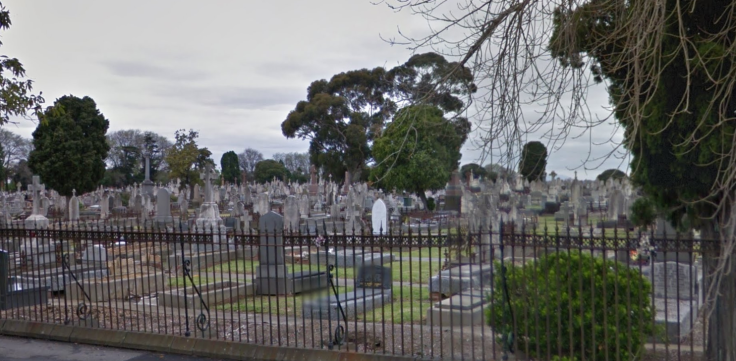Unnatural deaths of women are much more likely to be ignored
It could be because most coroners are men.

Maxwell McLean, University of Huddersfield
Half a million people die every year in England and Wales. According to the Office for National Statistics (ONS), 257,207 males and 272,448 females died in 2015. The biggest killers are cancer, heart disease and lung disease. However, each year, a small but significant number of people die an unnatural death. The Ministry of Justice (MOJ) coroners statistics reveal that in 2016, 24,542 people (16,694 males and 7,848 females) died an unnatural death, generally through accidents, suicide or failure in a medical or surgical intervention.
Unnatural death is the domain of the coroner. Under the Coroners Act 2009, the coroner has a duty to investigate any unnatural death, or death where the cause is unknown. However, there are way more inquiries into deaths of males than females.
When I analysed ten years' worth of data from the ONS and MOJ, I discovered that deaths of women were less likely to be reported to the coroner for investigation than deaths of men (38% of all deaths versus 49%). The data also revealed that, having been reported to the coroner, deaths of females were less likely to proceed to an inquest than deaths of males (8% versus 16%). And female deaths had a third of the chance of a male death of being confirmed as an unnatural death (2% versus 6% of all deaths) (see figure below).
There is no statutory duty to report a death to the coroner. Each year, doctors issue medical certificates detailing the cause of death for just over half of all deaths, without any coroner involvement. The legal duty to investigate deaths which are violent, unnatural or of unknown cause lies with the coroner.
The coroner's judicial independence – they are appointed by local authorities – has resulted in inconsistency and varied local practice in reporting regimes and decision-making. Nevertheless, they perform a crucial role in recognising unnatural deaths, providing answers for the bereaved and preventing similar deaths in future.

Yet there are stark differences in whether the deceased is male or female. In every coroner area, over the ten-year period, more deaths of males were reported to the coroner than deaths of females as a proportion of their registered deaths, and all areas took proportionally more deaths of males to inquest than females.
So why are women dropping out of the death investigation process? Is it because women live longer than men and are therefore more likely to die of natural causes? Age may be a factor, but it becomes more unlikely as an explanation as you move along the coroner process from reporting to inquest to outcome.
You can imagine that if a doctor has recently attended to an elderly patient, he or she may be more confident that the patient died of natural causes, so reporting the death to a coroner would seem unnecessary. But it's more difficult to see why age would affect the decision to go on to inquest, where, after initial enquiries, there may still be something peculiar in the death. To turn it around, more women who are reported to the coroner will be denied an inquest because the coroner will be satisfied that the death was natural.
Male dominated profession
The problem may be this – the coroner service is a relic of a bygone age. It has been an entirely male profession for the best part of its 800-year history, and shaped more recently by industrialisation and the growing possibility of unnatural death, predominantly in men.
Of the current 92 coroner areas in England and Wales, just 28 senior coroners are women (several having been appointed in recent times). Indeed, it took precisely 757 years for the first female coroner, Lilian Hollowell of Norfolk, to be appointed in England in 1951 (the office of coroner having been created in 1194). The first woman coroner in Wales, Mary Hassall, was appointed as recently as 2005. So, until the middle of the 20th century, only men determined what an unnatural death was.

Not only has the coroners office, for most of its history, been male dominated, it has also been male focused. Almost all (95%) unnatural deaths are categorised in one of six ways, known now as "conclusions" (previously "verdicts"). They are accidental death/misadventure; narrative verdict (where a "narrative" explaining the death is preferred to a shorter categorisation); suicide; industrial disease; drugs/alcohol related; and open verdicts. Yet even today, seven out of ten unnatural deaths of women are accounted for by just two inquest conclusions: accidental death and a narrative verdict, a severely limited categorisation that does nothing to help us understand how women die in unnatural circumstances. Deaths of men are much more evenly spread across the other categories and of course they dominate the numbers in all those other categories.
Deaths of men and women are treated differently across the coroner investigation process. Fewer women cross the thresholds of being reported to the coroner, having an inquest or confirming an unnatural death. When they do cross those thresholds, the existing list of verdicts does not serve women well. As it stands, coroners are vulnerable to the accusation that men's deaths are given a higher status than women's.
Maxwell McLean, Affiliate, Secure Societies Institute, University of Huddersfield., University of Huddersfield
This article was originally published on The Conversation. Read the original article.
© Copyright IBTimes 2025. All rights reserved.





















